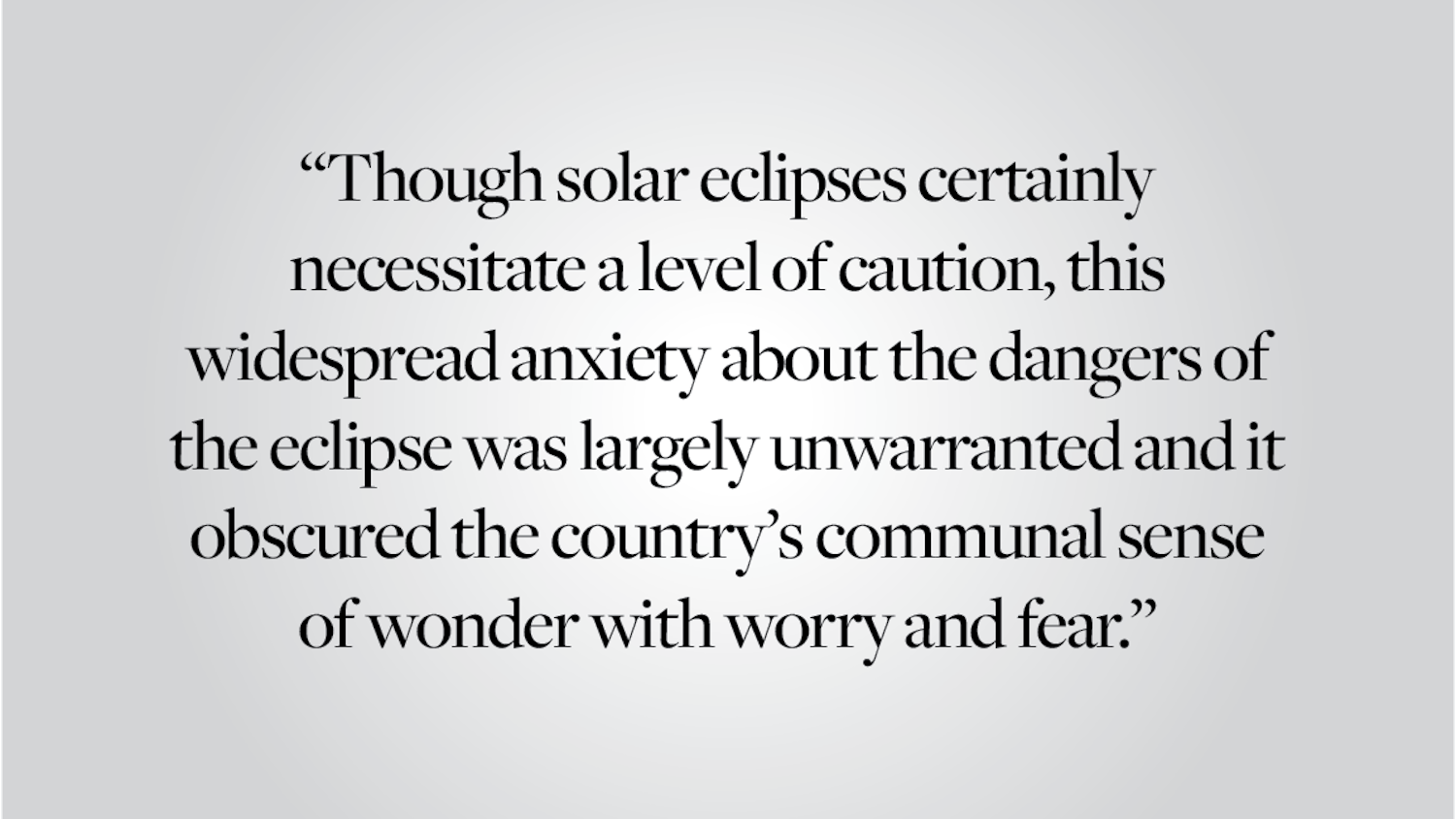While abroad last semester in Paris, I took classes at the Sorbonne, an imposing structure with roots in the 13th century. Housing several of France’s most prestigious universities and long associated with the country’s intellectual elite, the Sorbonne’s physical presence is as awe-inspiring as its reputation — adorned with a dome, statues and gold trim, the building would put Sayles or University Hall to shame. In order to enter this cathedral of learning, all students must present their student card to a guard at the entrance and open their bag for inspection. University authorities tightly control who can and cannot make use of the space.
Upon returning to Brown last week, one of the things I appreciated the most about my re-acclimatization to life here was the freedom of movement that students enjoy. No longer was I required to fish in the depths of my coat pocket to locate my student card and struggle to unzip my backpack as I approached a classroom building. Members of the Brown community — and, in theory, the general public — can access many University buildings and outdoor spaces belonging to The University without obstacle. Whereas there is a clear division between the scholarly sanctity of the Sorbonne and the rest of Paris, the Brown campus is continuous with the city of Providence.
Despite this contrast in the physical accessibility of the two universities, the opposite is true in the realm of admissions. Any student who has received the baccalaureat (high school diploma) can enroll in a French university — there is no competitive admission. Furthermore, universities in France, which are funded by the government, are extremely affordable, with undergraduate students paying less than 200€ per year for tuition. Even without selective admissions or private funding, the French university system claims 22 institutions in the Academic Ranking of World Universities.
On the other hand, American universities have become an increasingly difficult goal for many students to reach. While the total cost of attendance at Brown is $65,380 for the 2015-2016 academic year (not to mention the 4.1 percent increase recently approved by the Corporation), the United States Census Bureau estimated the median household income between 2009 and 2013 to be $53,046. As a point of comparison, the cost for a year at the University of Pennsylvania in 1950 was approximately $1,400, but the average household enjoyed more than three times as much in income. While (domestic) Brown students benefit from need-blind admission and financial aid that meets 100 percent of demonstrated need, many universities that are similarly expensive do not have such generous policies.
Furthermore, admissions have become more and more selective. Stanford boasts an acceptance rate of roughly 5 percent, and a host of other colleges — including Brown — admit less than 10 percent of applicants. Thanks to the digitization of applications and the increasing popularity of the Common App, students can now apply to more schools than ever before, and universities use their minuscule acceptance rates as a way to attract more applicants, creating a feedback loop that seems unlikely to end in the near future.
Perhaps it is unfair to compare Brown to the public universities occupying the Sorbonne. After all, the French higher education system also includes the grandes ecoles — even more prestigious than typical French universities, they require a competitive entrance exam and cost anywhere from 500€ to 10,000€ (still modest by U.S. standards). Yet even public universities in the United States are far less accessible than those in France. Kiplinger has ranked the University of North Carolina at Chapel Hill (in my home state) the number-one value in public higher education a remarkable 15 times in a row. Even so, the total cost per year for in-state students is in excess of $20,000, and for out-of-state students, the burden is more than $45,000. And Chapel Hill’s acceptance rate of 28 percent, which seems high compared to Berkeley’s 16 percent and UCLA’s 19 percent, is still shockingly low in relation to that of its French counterparts.
Much of this information isn’t new to Brown students or anyone familiar with the ultracompetitive world of American higher education. But my exposure to the French model has allowed me to view the issue from a new vantage point, putting into stark perspective just how unreasonable — and unnecessary — the system really is. In between questions about the rise of Donald Trump and my thoughts on American foreign policy, my French friends and acquaintances would ask me if I really had to pay tens of thousands of dollars to attend Brown. In France, where public services are essential to people’s understanding of government and life in general, such a system is unfathomable.
Of course, there are advantages to the American conception of universities in general and private universities like Brown in particular. French universities are generally nonresidential, and after a semester of commuting to class, I can attest to the importance of a campus where students both learn and live together. We also benefit from a range of services that are (in my experience) largely unavailable in France: efficient online course registration and small student-to-teacher ratios, among many others. Those advantages are not insignificant — they explain why I didn’t stay in France for another semester, and why I chose Brown over the “best value” that Chapel Hill offers. Still, in light of the quality of education I received during my time in Paris, it seems clear to me that we in the United States must do something to halt the frightening trend of runaway expenses and plummeting acceptance rates. We should strive to make the benefits of tertiary education more readily available, rather than extending the ivory tower higher and higher into the clouds.
Nikhil Kumar ’17 can be contacted at nikhil_kumar@brown.edu.
Please send responses to this opinion to letters@browndailyherald.com and other op-eds to opinions@browndailyherald.com.





